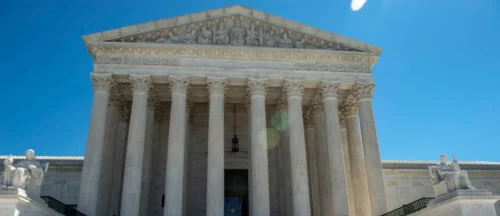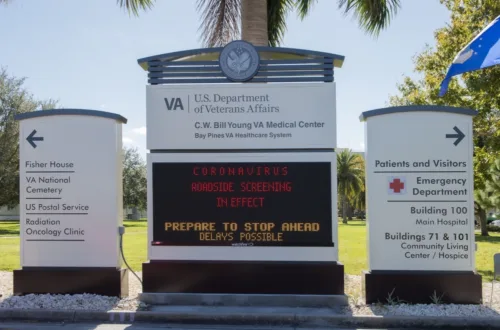Supreme Court Hears GI Bill Suit Against VA

Update 4/17/2024 The U.S. Supreme Court ruled in favor of plaintiff James Rudisill in the case discussed below. Rusdill is a veteran who sue the federal government, arguing he was eligible for up to 48 months of education benefits under both the Montgomery GI Bill and the Post-9/11 GI Bill. Rusdill signed up for each having served twice, once as an enlisted soldier and once as an officer.
The Supreme Court agreed with Rusdill, ruling that while a veteran cannot exceed the maximum VA entitlement permitted, using both VA programs in Rusdill’s circumstances did not violate the rules.
Update 11/09/2023 The Supreme Court heard arguments in this case after an 8-year legal fight between veteran Jim Rudisill and the Department of Veterans Affairs (see below.) At press time no Supreme Court decisions have been made in the case, which is being closely monitored by veteran advocacy groups.
Should veterans be able to use both the Montgomery GI Bill and the Post-9/11 GI Bill if they qualified for or signed up for both? That’s a question the Supreme Court has agreed to take up, the culmination of an eight-year fight in the nation’s courts over GI Bill benefits.
Rudisill vs. McDonough: An Eight-Year Journey
Jim Rudisill is an Army veteran who switched from the Montgomery GI Bill to the Post-9/11 GI Bill and used all those benefits. But Rudisill wanted to attend another college to become an Army chaplain. He tried to use his unused Montgomery GI Bill benefits but launched a lawsuit against the VA after being denied those benefits.
The Department of Veterans Affairs holds that Rudisill should be allowed to use both amounts to “double-dipping” a federal benefit, which is not permitted under federal law.
Lower courts disagreed, ruling that the Montgomery GI Bill and the Post-9/11 GI Bill are technically separate benefits in spite of both being funded by the VA budget. The fight has gone all the way to the Supreme Court.
The Origin Story of the Court Fight
Under the current rules, those who qualify for both the Montgomery GI Bill and the Post-9/11 GI Bill must choose one program or the other. The choice is irreversible, and while the Montgomery GI Bill program is not ideal for many college students compared to the alternative, some choose to keep their Montgomery GI Bill benefits instead of switching.
Those who do switch immediately lose any remaining Montgomery GI Bill benefits in favor of the Post-9/11 benefit.
Related: Ultimate Guide to GI Bill Benefits
These “lost” or unused benefits factor into the lawsuit, with Jim Rudisill claiming he should be able to access those benefits, presumably since he signed up for them and paid the required monthly stipend for a year as required under the Montgomery GI Bill program.
The Montgomery GI Bill is being phased out; the Department of Veterans Affairs still lists all qualifying information about the program as well as details on who qualifies and when, but over time this education program will disappear in favor of the Post-9/11 GI Bill and the Forever GI Bill amendments that have enhanced it.
What Happens Next?
At press time, the case was decided in favor of the Plaintiff (see above.) What follows is preserved here for archival purposes.
Getting the court to agree to hear the case isn’t easy; the Supreme Court commonly rejects cases because it agreed with a lower court ruling, because the people bringing the case have no “standing” or legal basis for doing so, or, in rarer cases, the court may decide it has no jurisdiction.
The fact that the Supreme Court will hear this case means the case has passed some of the most basic challenges. Now, the plaintiffs and the defense have to mount their cases, and the court must decide.
Whatever the court decides, it’s estimated that the ruling will affect nearly 2 million veterans of the Post-9/11 era and determine the fate of literally billions of dollars in GI Bill funds. A final Supreme Court verdict is expected in 2024.
Related: Disabled Veteran Benefits Guide
About the author
Editor-in-Chief Joe Wallace is a 13-year veteran of the United States Air Force and a former reporter/editor for Air Force Television News and the Pentagon Channel. His freelance work includes contract work for Motorola, VALoans.com, and Credit Karma. He is co-founder of Dim Art House in Springfield, Illinois, and spends his non-writing time as an abstract painter, independent publisher, and occasional filmmaker.


